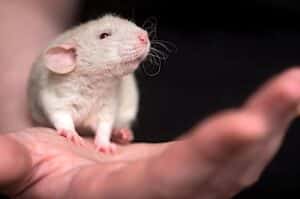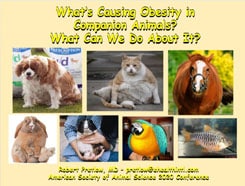
One of the interesting challenges taken up by scientists in the past few years has been how to convince a body to make more GLP-1 on its own, so overweight people do not have to spend enormous sums on monthly drug buys. And clues have been found. Take, for instance, this highly technical quotation indicating progress in that direction:
The newly identified protein P9 is secreted by Akkermansia muciniphila and binds to ICAM-2 to directly trigger the secretion of GLP-1 by the L cells, while P9-stimulated IL-6 secretion by macrophages and/or intestinal epithelial cells (via an unclear mechanism) further promotes GLP-1 secretion.
A more recent and more approachable piece of reportage brings us up to date on progress in this area:
Emerging research indicates that the metabolites produced by Akkermansia […] may play a role in modulating the secretion of GLP-1… This interplay highlights the potential for Akkermansia to indirectly affect glucose metabolism and appetite regulation, offering a novel approach to addressing metabolic disorders.
Imagine us having the power to stop food cravings before they even start, right there in our own digestive tracts! Instead of swallowing or injecting medicine, why not simply manufacture it from our own innate inner resources? How do we set up the ideal conditions to facilitate that process?
Fiber is the raw material that needs to be present for metabolizing into a bunch of different stuff that all facilitates the production of GLP-1 inside a person. Then the pancreas makes insulin, which directs the brain to tell the mouth to stop eating. It also tells the stomach to hang onto the latest meal, and savor that full feeling.
What we need the body to do is to facilitate the flourishing of the prime types of gut bacteria, like Clostridium butyricum. But above all, attention is focusing on the rock-star known as Akkermansia muciniphila, which has been making quite a name for itself, and is being strenuously marketed as an over-the-counter supplement that consumers may choose at will. As we have noted here before, “Gut bacteria can significantly impact weight, independent of genes. Transplanting the microbiome from an obese twin drives obesity. Conversely, transplanting the microbiome from a healthy twin drives weight loss.”
The popularity of RYGB (roux-en-y gastric bypass surgery) has led to interesting observations and hints about what goes on inside a person after this type of surgery:
A decrease in adiposity and body weight without a change in food intake suggests that the RYGB-associated microbiota may either reduce the ability to harvest energy from the diet or produce signals regulating energy expenditure and/or lipid metabolism.
As we have seen, the gastric bypass, or Roux-en-Y procedure, used for morbidly obese people, is an irreversible combination of restrictive and malabsorptive methods. Part of the stomach is cordoned off and the very minimalist remainder of it is routed directly to the small intestine, drastically reducing the amount of food the body can absorb. This can lead to some weird results, as detailed in an article about discoveries at the Cleveland Clinic related to Type 2 diabetes:
As a treatment for obesity, Roux-en-Y is effective. As a treatment for diabetes, it is extraordinary. In 80% of cases the condition vanishes within days. Experiments conducted on mice […] show that Roux-en-Y causes the composition of the gut microbiome to change. Dr Nicholson thinks this explains the sudden disappearance of diabetes.
[A] possibility remains that the improvement of glucose homeostasis observed following bariatric surgery is mediated by a change in gut microbiota, leading to an enhancement of nutrient-sensing mechanisms in the jejunum and an improvement in glucose tolerance…
As more surgeons investigated associations between the successful post-op maintenance of weight loss after bariatric surgery and changes in gut bacteria and functional brain activity, the gut microbiome began to be perceived as a significant regulator of obesity.
All sorts of interesting observations began to appear in the literature. From UCLA came a report by Emeran A. Mayer, M.D., about the various mechanisms by which weight-loss surgery accomplished its purpose:
We know from several studies that surgically reducing the size of the stomach is not the main mechanism for weight loss. Surprisingly, several studies have demonstrated that weight loss surgery produces changes in food preferences and appetite. Our research aims to find out what causes these unexpected changes…
What was the brain doing about weight loss, appetite reduction and changes in food preferences in response to surgery? How could this information lead to the long‐term goal of finding non-invasive treatment “capable of reproducing these brain changes and associated reductions in appetite without surgical intervention”?
Akkermansia is an enriched bacterial group that can “work independently or interdependently to influence host metabolic improvements.” Several authors from the Obesity, Metabolism & Nutrition Institute and Gastrointestinal Unit, Massachusetts General Hospital, wrote of how the probiotic Akkermansia muciniphila is a beneficial strain that is alleged to increase GLP-1 production:
[I]t is possible that Akkermansia may have a substantial role in regulating host adiposity and weight loss. Akkermansia can use mucus as a sole source of carbon and nitrogen in times of health and particularly in times of caloric restriction…
It strengthens the gut lining and improves health by reducing permeability. In this region of the body, permeable is a dirty word. We have heard the slogan, “What happens in Las Vegas, stays in Las Vegas,” and the same ought to be true of the human intestine. What belongs in there should remain in there, not go leaking all over the place.
Your responses and feedback are welcome!
Source: “A newly identified protein from Akkermansia muciniphila stimulates GLP-1 secretion,” ScienceDirect.com, 06/01/21
Source: “Akkermansia’s Impact on GLP-1 and Gut Microbiota Dynamics,” BiologyInsights.com, 04/29/25
Source: “Conserved Shifts in the Gut Microbiota Due to Gastric Bypass Reduce Host Weight and Adiposity,” NIH.gov, 05/13/13
Source: “Me, myself, us,” Economist.com, 08/18/12
Source: “Nutrient-Sensing Mechanisms in the Gut as Therapeutic Targets for Diabetes…,” DiabetesJournals.org, September 2013
Source: “From the Desk of Emeran A. Mayer, MD,” UCLA.edu, Spring 2014
Source: “Conserved Shifts in the Gut Microbiota Due to Gastric Bypass Reduce Host Weight and Adiposity,” ScienceMag.org, March 2013
Source: ‘Getting To Know Your Gut Bugs: Akkermansia Muciniphila,” DrHyman.com, 07/25/21
Image by SamuelFJohanns/Pixabay

 FAQs and Media Requests:
FAQs and Media Requests: 











